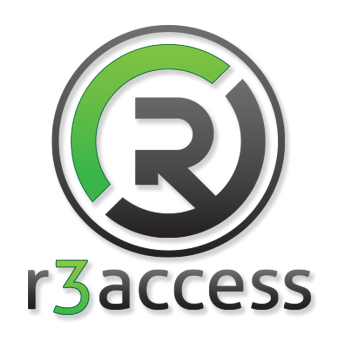Are Common Access Control Myths Holding You Back?
Common Access Control systems are critical for ensuring security and managing entry points in various settings. However, misconceptions and myths about their complexity, cost, and functionality often deter individuals and organizations from adopting these systems. This article aims to dispel these myths, providing clear, factual insights into the true nature and benefits of access control technologies.
Addressing common misunderstandings highlights how these systems are an accessible, secure, and efficient solution for managing access in both small and large-scale environments.
Myth: Common Access Control Systems Are Too Expensive
A common misconception about access control systems is that they are prohibitively expensive. This belief often stems from the assumption that such systems are designed only for large, high-budget organizations. However, the reality is quite different. Access control technology has become more affordable over the years, making it a viable option for businesses and residences of all sizes.
Cost-effective solutions offer basic yet efficient security measures, ensuring that even smaller entities can benefit from enhanced security without breaking the bank.
The customizable nature of these systems further enhances this affordability. Contrary to the belief that one must invest in a complete, top-tier system, Common Access Control can be tailored to specific budgetary and security needs. Companies can opt for essential features initially and expand their system as needed. This modular approach makes access control more affordable and allows for flexibility in response to changing security requirements or financial constraints.
The long-term financial benefits of implementing an access control system are often overlooked. These systems can significantly reduce the risk of theft and unauthorized access, leading to lower insurance premiums and enhanced protection of assets. Access control systems can streamline various administrative processes, saving time and money that would otherwise be spent on traditional security measures. This makes the investment in access control a financially prudent decision in the long run.
Misconception: Installation Is Disruptive and Complicated
Installing access control systems is often perceived as a complex and disruptive process. Many believe it requires extensive modification to existing infrastructure, leading to prolonged downtime. However, the reality is that modern access control systems are designed for seamless integration.
Most systems are developed with user convenience in mind, ensuring minimal disruption during installation. Advanced wireless technologies and less invasive hardware have made the installation process quicker and less cumbersome than in the past.
The availability of professional installation services further simplifies the process. Skilled technicians can efficiently integrate these systems into existing frameworks, reducing the impact on daily operations.
This professional installation eases the implementation process and optimizes the system. The expertise provided by these professionals can also guide businesses in choosing the most suitable system for their specific environment, thereby reducing unnecessary complexities and costs.
Manufacturers and service providers often provide comprehensive training and support post-installation. This approach ensures that the users are comfortable operating the system and can make the most of its features.
The focus on user training helps dispel the myth that access control systems are too technical or challenging to manage. Instead, it empowers users to handle their security setup confidently.
Advancements in remote and cloud-based access control solutions have simplified the installation process. These systems reduce the need for extensive on-site hardware and can be managed virtually, which is a boon for businesses looking to minimize physical alterations to their premises. As technology evolves, the ease of integrating access control systems into existing structures continues to improve, further debunking the myth of a disruptive and complicated installation process.
Myth: Common Access Control Is Only for High-Security Areas
There’s a common belief that access control systems are reserved for high-security locations like government buildings or financial institutions. This misconception overlooks the versatile applicability of these systems in a variety of settings.
Modern access control solutions are designed to enhance security in diverse environments, ranging from small retail shops to residential buildings, and not just in high-security zones. Their scalability allows for customized security levels suitable for different types of premises.
The application of access control systems extends beyond just managing entry points. They can monitor and control access within various building sections, offering an added layer of security and operational control.
For instance, in educational institutions, access control can restrict entry to certain areas, enhancing student safety. Similarly, in corporate settings, these systems can safeguard sensitive information by restricting access to specific departments or areas.
The versatility of access control systems also lies in their ability to integrate with other security measures. This integration can enhance overall security infrastructure, making it more robust and efficient.
For example, integrating access control with surveillance systems can provide a comprehensive security overview, allowing for real-time monitoring and quick response to breaches.
The myth that access control is only for high-security areas ignores its utility in everyday convenience and management. Beyond security, these systems offer practical solutions for managing employee attendance, restricting access to authorized personnel, and even automating certain aspects of building management, like lighting and temperature control, based on occupancy. This broader range of functionalities demonstrates that access control systems are about high-level security and enhancing efficiency and convenience in various settings.
Misconception: Access Control Technology Becomes Quickly Outdated
A prevalent misconception about access control technology is that it rapidly becomes outdated, requiring frequent and costly upgrades. However, this view fails to consider the evolving nature of these systems, designed with adaptability and long-term utility in mind. Many modern access control systems are built to be compatible with future updates, both in hardware and software, allowing them to remain effective and relevant over time.
The integration of cloud-based technologies in access control systems further counters this misconception. Cloud-based solutions offer:
- Easy updates and patches to enhance security features.
- Remote management capabilities.
- Scalability to accommodate growing security needs.
- Compatibility with new technologies as they emerge.
These aspects ensure the system remains up-to-date and adaptable to evolving security challenges.
The modular design of many access control systems allows for gradual upgrades. Rather than requiring a complete overhaul, components can be updated or added as needed. This approach makes maintaining a current system more manageable financially and ensures that the system can evolve with changing security requirements.
Manufacturers in the access control industry are keenly aware of technological advancements and often design their systems to be forward-compatible.
This foresight means that while technologies do evolve, the core components of these systems are designed to work seamlessly with new advancements, reducing the need for complete system replacements. This strategy not only preserves the value of the initial investment but also ensures that Common Access Control systems are a long-term, sustainable solution for security needs.
Myth: These Systems Are Prone to Hacking and Less Secure
A widespread myth about access control systems is their supposed vulnerability to hacking, leading to a perception that they are less secure than traditional locks and keys. In reality, the security of access control systems is typically superior to conventional methods. These systems benefit from advanced encryption and constantly updated security protocols, making them difficult to compromise.
The fear of hacking often causes people to overlook the physical and cyber security measures integrated into these systems. Modern Common Access Control systems usually incorporate multi-factor authentication, biometric verification, and regular security audits. These features collectively enhance the security profile, making unauthorized access exceedingly challenging.
It’s also important to note that traditional physical security methods have vulnerabilities, such as key duplication or lock picking, which are not concerns with electronic access control systems. By contrast, access control systems can quickly deactivate lost or stolen credentials, instantly securing a facility against potential unauthorized entry.
Access control system providers’ ongoing support and updates play a crucial role in maintaining security. Regular software updates ensure the system is equipped to counter new hacking techniques, keeping the security measures robust and up-to-date. This proactive approach to security maintenance is a critical aspect that bolsters the overall security of Common Access Control systems against potential cyber threats.
Misconception: Only Tech-Savvy Users Can Manage Access Control Systems
One common misconception is that managing access control systems requires high technical expertise. In truth, these systems are designed with user-friendliness in mind.
Manufacturers understand the importance of accessibility and create interfaces that are intuitive and easy to navigate. This approach ensures that even individuals with minimal technical background can operate and manage the systems effectively.
The evolution of user interfaces in access control systems has been significant. Modern systems often feature graphical user interfaces (GUIs) with clear instructions, straightforward menus, and visual aids. This user-centric design simplifies tasks like adding or removing users, updating access rights, and monitoring entry logs. Such simplicity in operation demystifies the management of these systems and makes them accessible to a broader range of users.
Many Common Access Control systems now offer mobile applications and web-based platforms, providing convenience and flexibility in management. Users can control access rights, receive security alerts, and monitor activities in real-time from their smartphones or computers.
This level of accessibility and control has transformed the management of access control systems into a more manageable and less intimidating task.
Continuous customer support and training provided by manufacturers and service providers further ease the management process. Access to customer support ensures that any technical issues or questions can be promptly addressed, while training sessions help users understand the full capabilities of their systems. This support structure ensures that all users can effectively manage their access control systems, regardless of their technical skills.
Contact R3 Access for Common Access Control
At R3 Access, we are committed to providing top-tier Common Access Control solutions and expert guidance. We understand that navigating the complexities of access control systems can be challenging, and our team is here to assist you every step of the way.
Whether you’re looking for a new installation, an upgrade to an existing system, or simply have questions about Common Access Control, our experienced professionals are ready to help. Contact us for personalized advice and solutions that align with your security objectives.
Follow us on linkedin
Top Access Control Systems
Cellgate: Watchman W460
Advanced gate access control system with real-time monitoring and remote management. Ideal for residential or commercial use, offering seamless integration with smartphones for convenient gate access.
Key Features
- Real-time monitoring and alerts
- Remote management capabilities
- Seamless smartphone integration
- Suitable for both residential and commercial use
- Enhanced security features
- User-friendly interface
Liftmaster: CAPXLV
Innovative cloud-based access control system providing secure, remote management of entry points. Features real-time access monitoring and integration with various security platforms for enhanced convenience and control.
Key Features
- Cloud-based remote management
- Real-time access monitoring
- Integration with multiple security platforms
- Secure and reliable operation
- Ideal for commercial and residential properties
- User-friendly and intuitive interface
FAAC: Easypass 100
Reliable access control system designed for easy and efficient management of entry points. Equipped with user-friendly features and advanced security options, making it suitable for both residential and commercial settings.
Key Features
- Easy and efficient entry point management
- Advanced security features
- User-friendly design
- Suitable for residential and commercial use
- Reliable performance
- Flexible integration options


